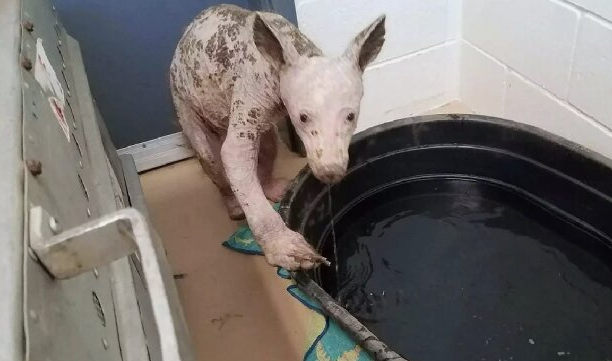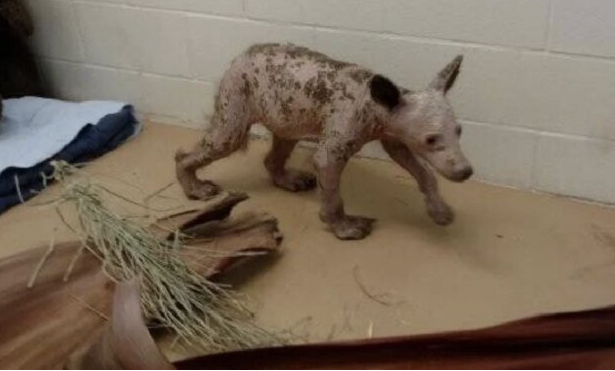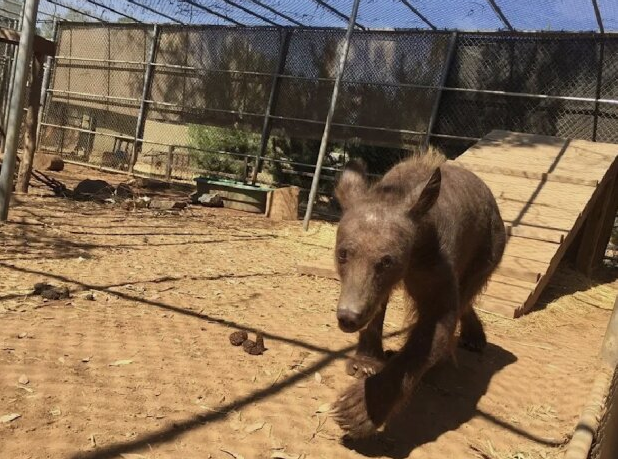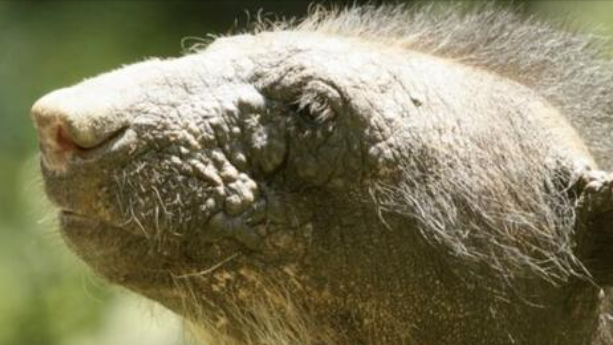A young, bald bear cub walked the streets of San Diego on Christmas Eve in the winter of 2017.
California Department of Fish and Wildlife officials had to decide the fate of wild animals in the city, but couldn’t figure out what kind of animal it was.

The poor animal was taken to the city’s Wildlife Center for identification. It turned out that the baffled trappers and veterinarians were dealing with a female black bear that had been rendered hairless by a severe form of scabies, a skin disease caused by mites.
When the female bear was brought into the facility, she didn’t look very sympathetic. Its skin was wrinkled, covered with sores, and its face was full of sadness, grief and helplessness. Believe me, animals know how to express emotions.

Eva was thought by veterinarians to be a one-year-old animal because of her appearance and size. However, the wear of her teeth indicated that the animal was much older, between 3 and 4 years old. The reason for the stunting was illness and subsequent exhaustion. The veterinarians took care of the teddy bear. They named her Eva.
Throughout 2018, the poor animal struggled with the disease. The “rescue team” hoped that the bear cub would have a chance to return to the wild.
But a long illness and her habit of living among people made it impossible for her to return home. The same was done to Dominga, a stress-ridden, balding spectacled bear.

Fortunately, Eva was able to recover from her many problems. Christmas 2019 was also “warm and cuddly” for her, unlike last year, which she spent in an enclosure under the eyes of surprised professionals.
That same year, 2019, the “refreshed” bear arrived at Black Beauty Ranch, whose residents are cared for by a branch of the Society for the Prevention of Cruelty to Animals (HSUS).
Witnesses to her rehabilitation describe Eva as a “feisty bear cub.” That means she will remain active for the rest of her life despite her failing health as a teenager.
